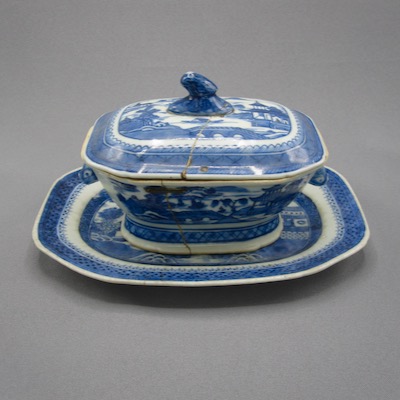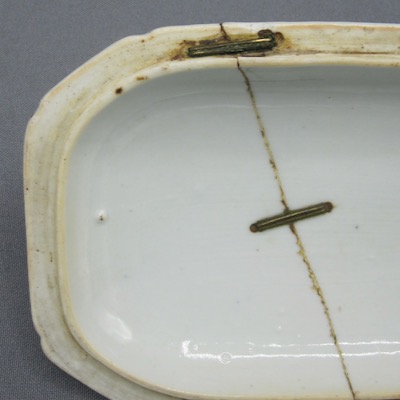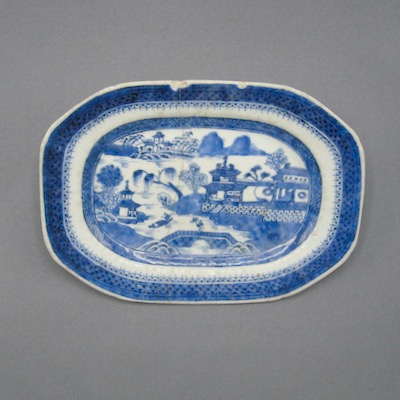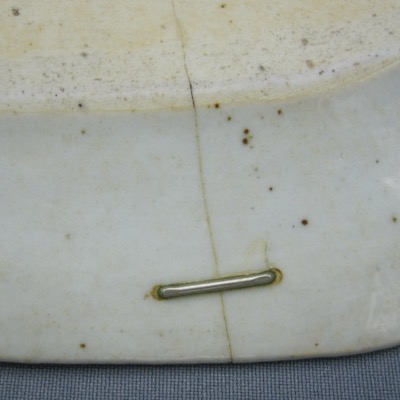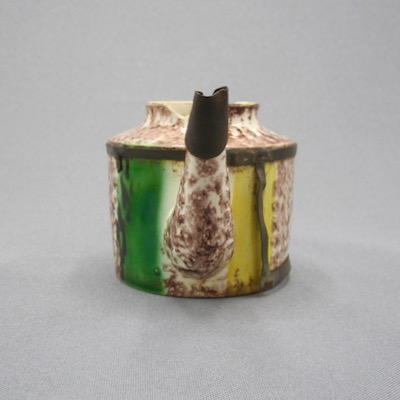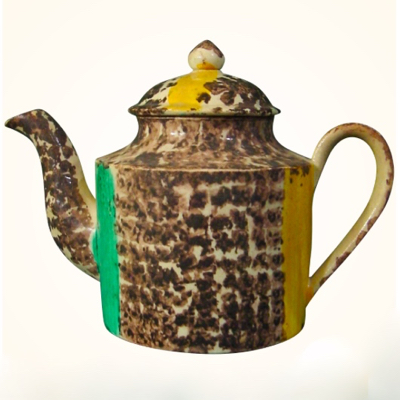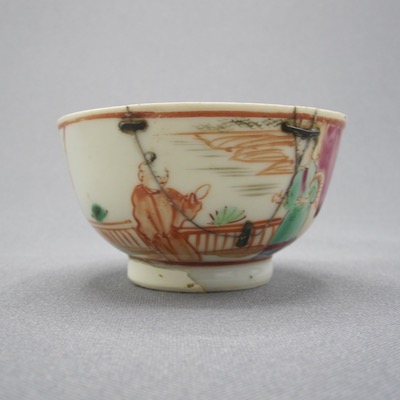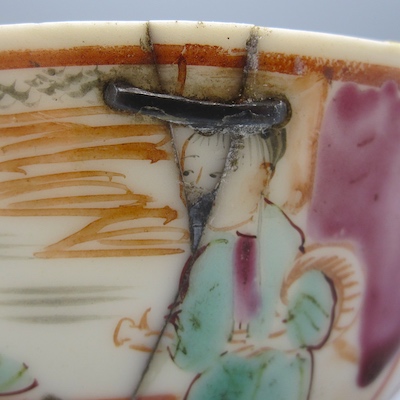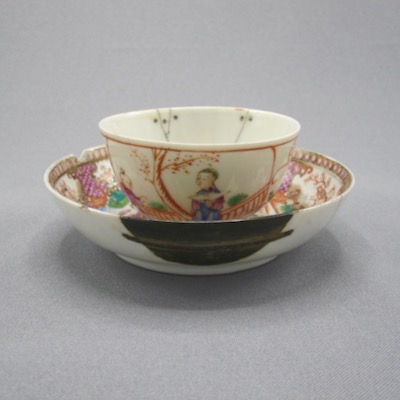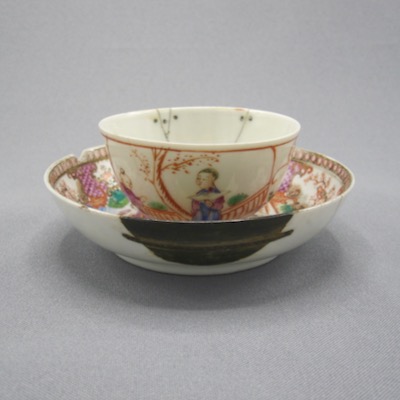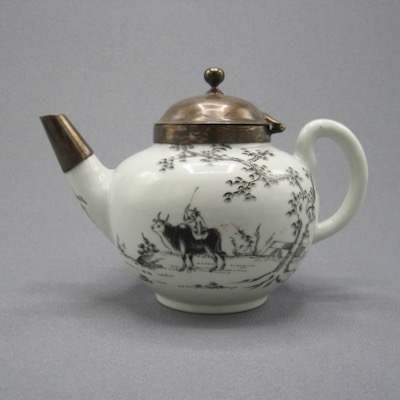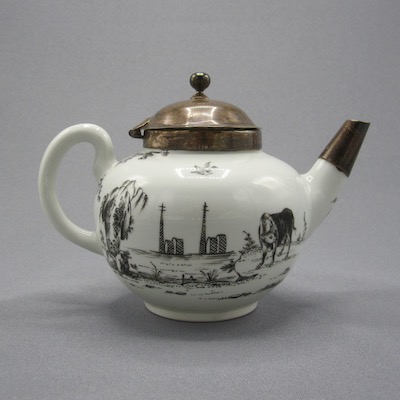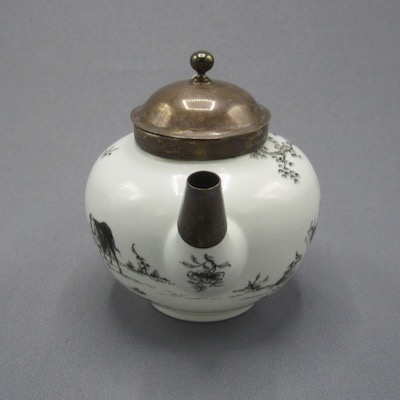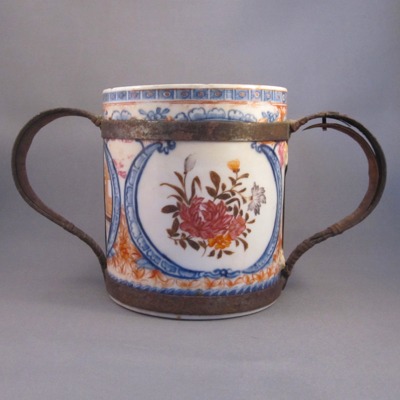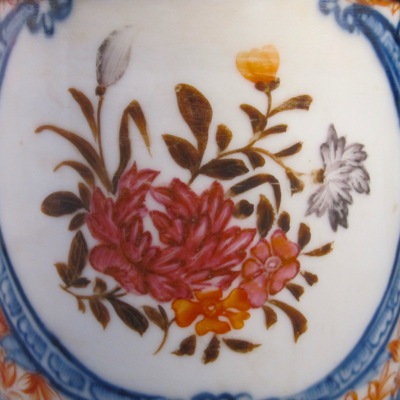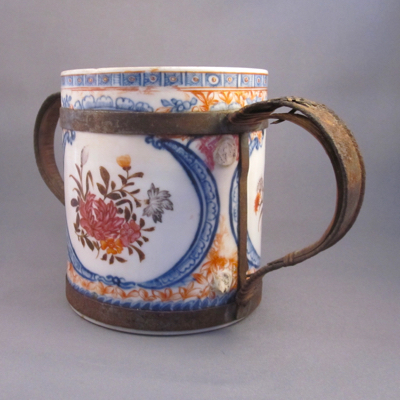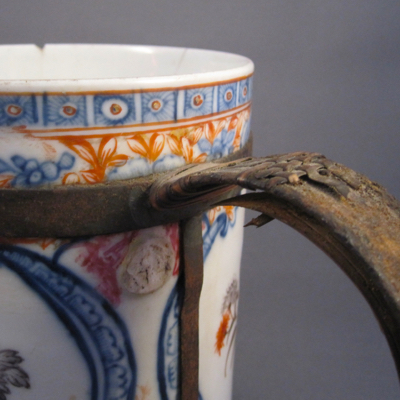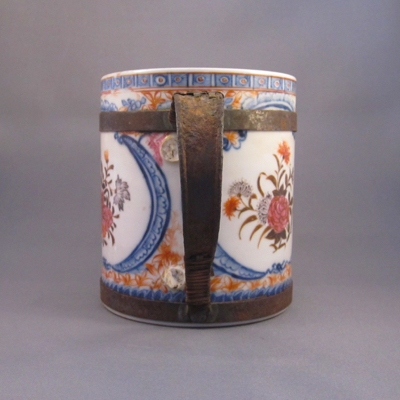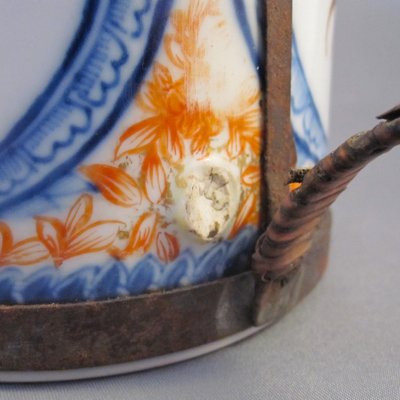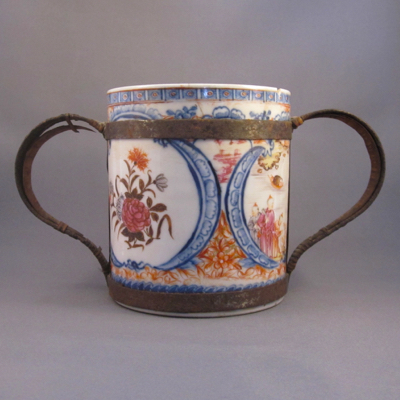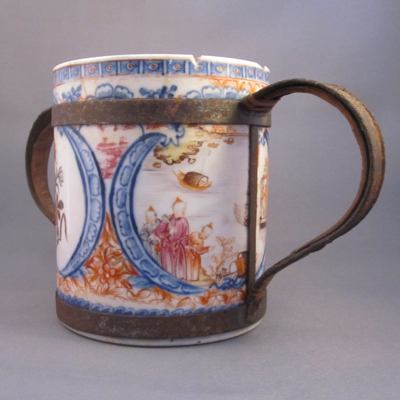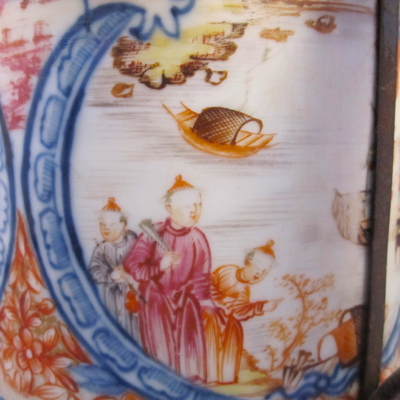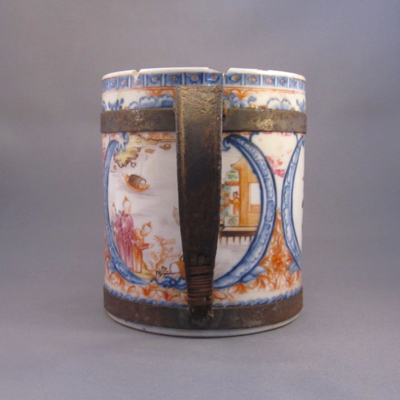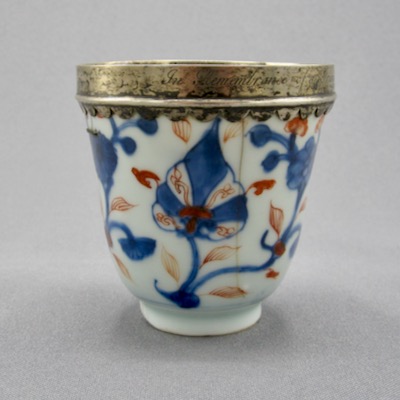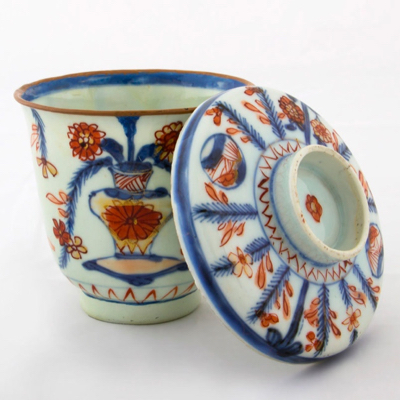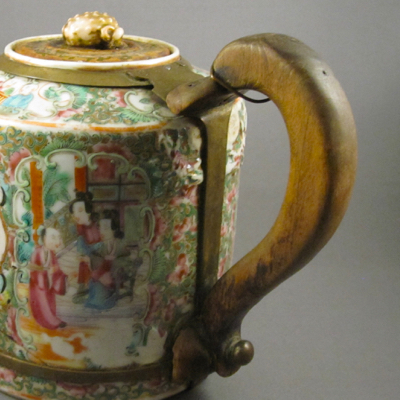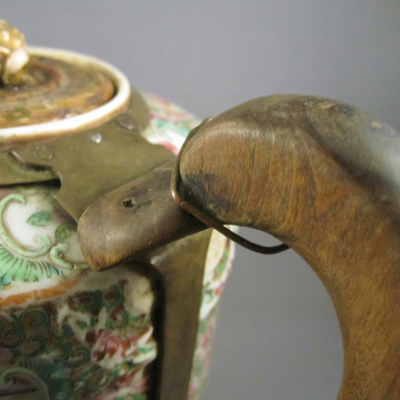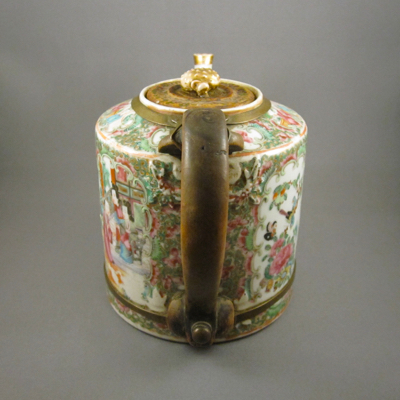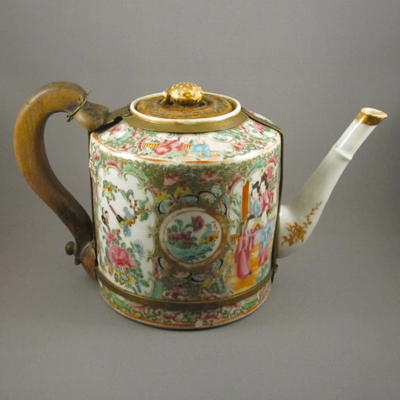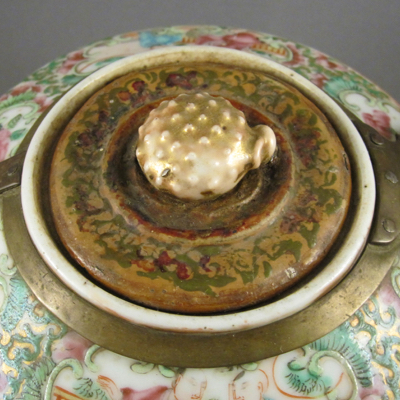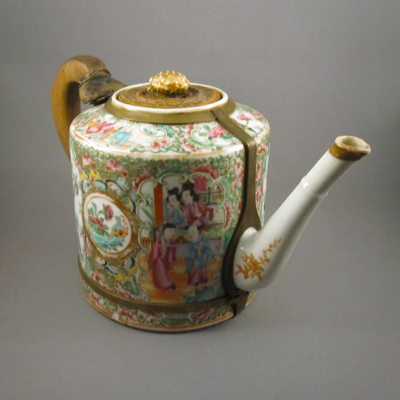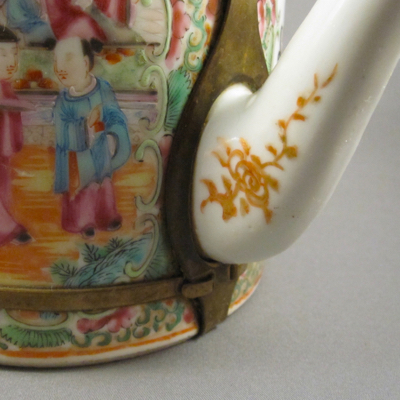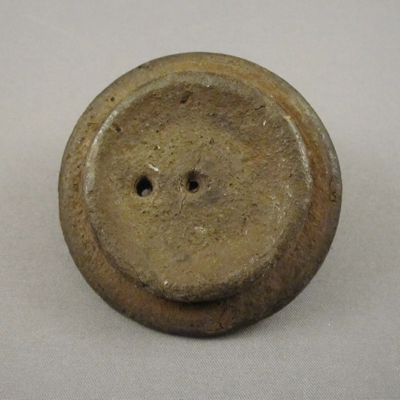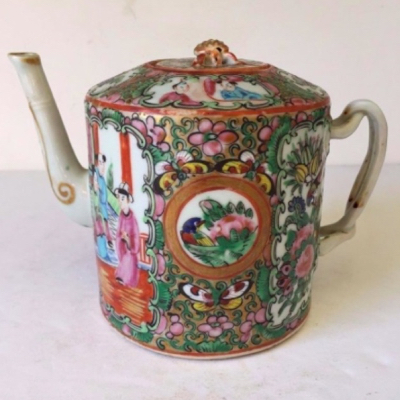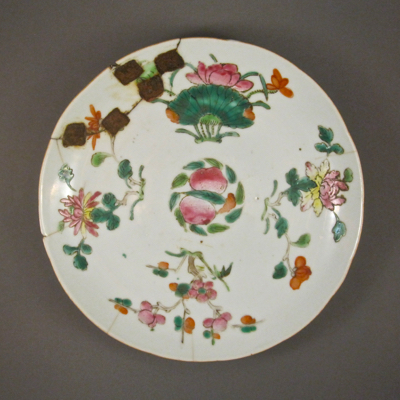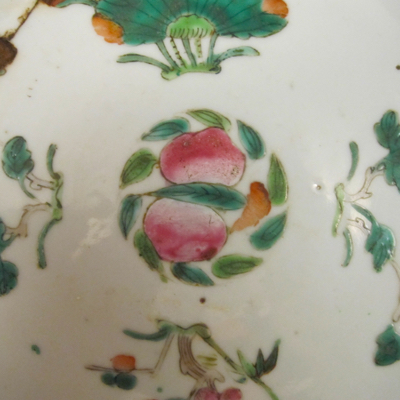My cousin-in-law Carol is a true artist with incredible taste. She is equally adept at painting, sculpture, sewing, and just about any other form of art or craft. Her homes have been decorated with a keen eye and filled with beautiful and quirky details. When she found out about my passion for antiques with inventive repairs, she started sending me wonderful examples for my collection.
This trio of mis-matched 18th century Chinese Canton porcelain arrived unannounced a few months ago. Each piece is decorated in the pagoda pattern in cobalt blue underglaze on a white ground. The small tureen measures 7 inches wide from handle to handle and is 5 inches high to the top of lid finial. The small plate, used here as an under tray, is 9.5 inches x 6.75 inches.
I wouldn’t be surprised of these “damaged” pieces were weeded out of a larger dinner service by a dealer who only wanted to keep the “perfect” pieces. The repairs here include 3 large double brass staples each on the tureen and lid, and 3 large white metal staples on the underside of the plate.
Thank you to whoever did me the favor of dividing up the set and leaving the more interesting stapled pieces for my collection. And thank you again Carol for your generosity and appreciation for the unusual and the quirky!
